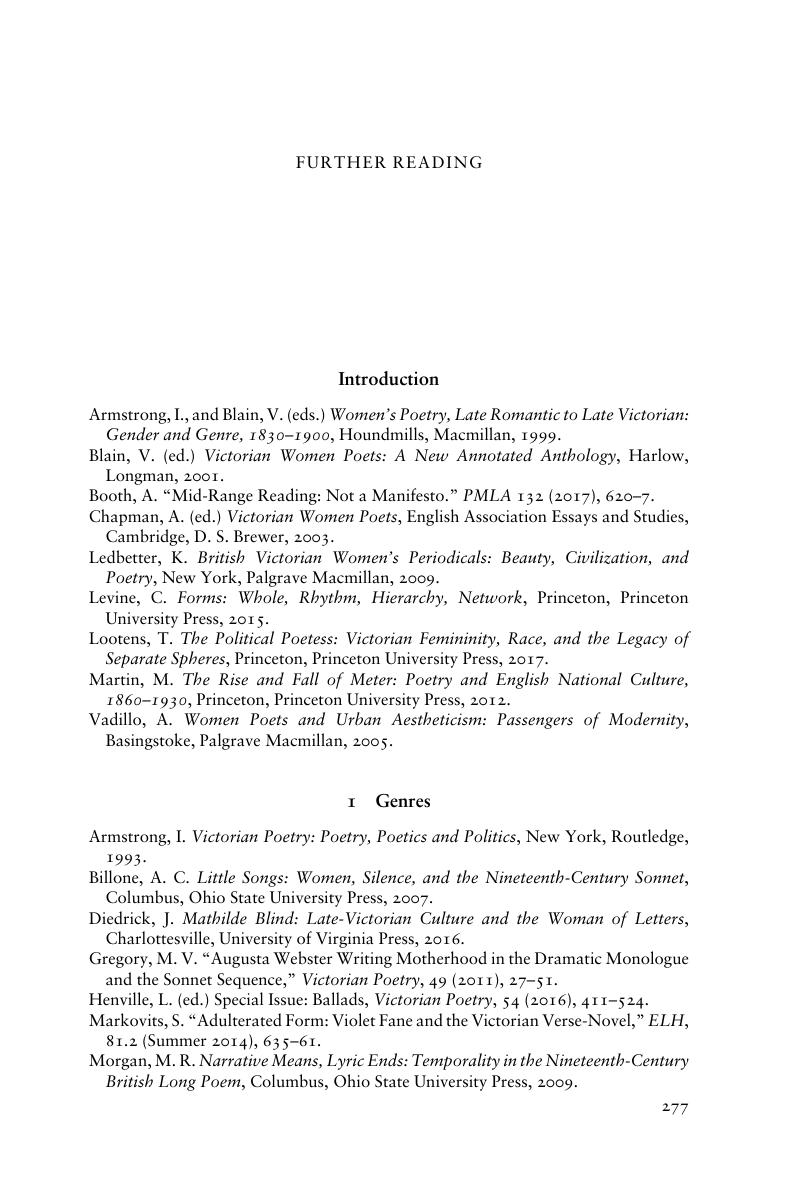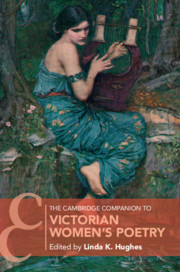Book contents
- The Cambridge Companion to Victorian Women’s Poetry
- The Cambridge Companion to Victorian Women’s Poetry
- Copyright page
- Dedication
- Contents
- Illustrations
- Contributors
- Acknowledgments
- Chronology of Publications and Events
- Introduction
- Part I Form and the Senses
- Part II Women’s Poetry in the World
- Part III Nurturance and Contested Naturalness
- Part IV Reading Victorian Women’s Poetry
- Afterword Nineteenth-Century Women’s Poetry in the Field of Vision
- Further Reading
- Appendix Poets’ Biographies
- Index
- Cambridge Companions to Literature
- References
Further Reading
Published online by Cambridge University Press: 07 March 2019
- The Cambridge Companion to Victorian Women’s Poetry
- The Cambridge Companion to Victorian Women’s Poetry
- Copyright page
- Dedication
- Contents
- Illustrations
- Contributors
- Acknowledgments
- Chronology of Publications and Events
- Introduction
- Part I Form and the Senses
- Part II Women’s Poetry in the World
- Part III Nurturance and Contested Naturalness
- Part IV Reading Victorian Women’s Poetry
- Afterword Nineteenth-Century Women’s Poetry in the Field of Vision
- Further Reading
- Appendix Poets’ Biographies
- Index
- Cambridge Companions to Literature
- References
Summary

- Type
- Chapter
- Information
- The Cambridge Companion to Victorian Women's Poetry , pp. 277 - 284Publisher: Cambridge University PressPrint publication year: 2019



